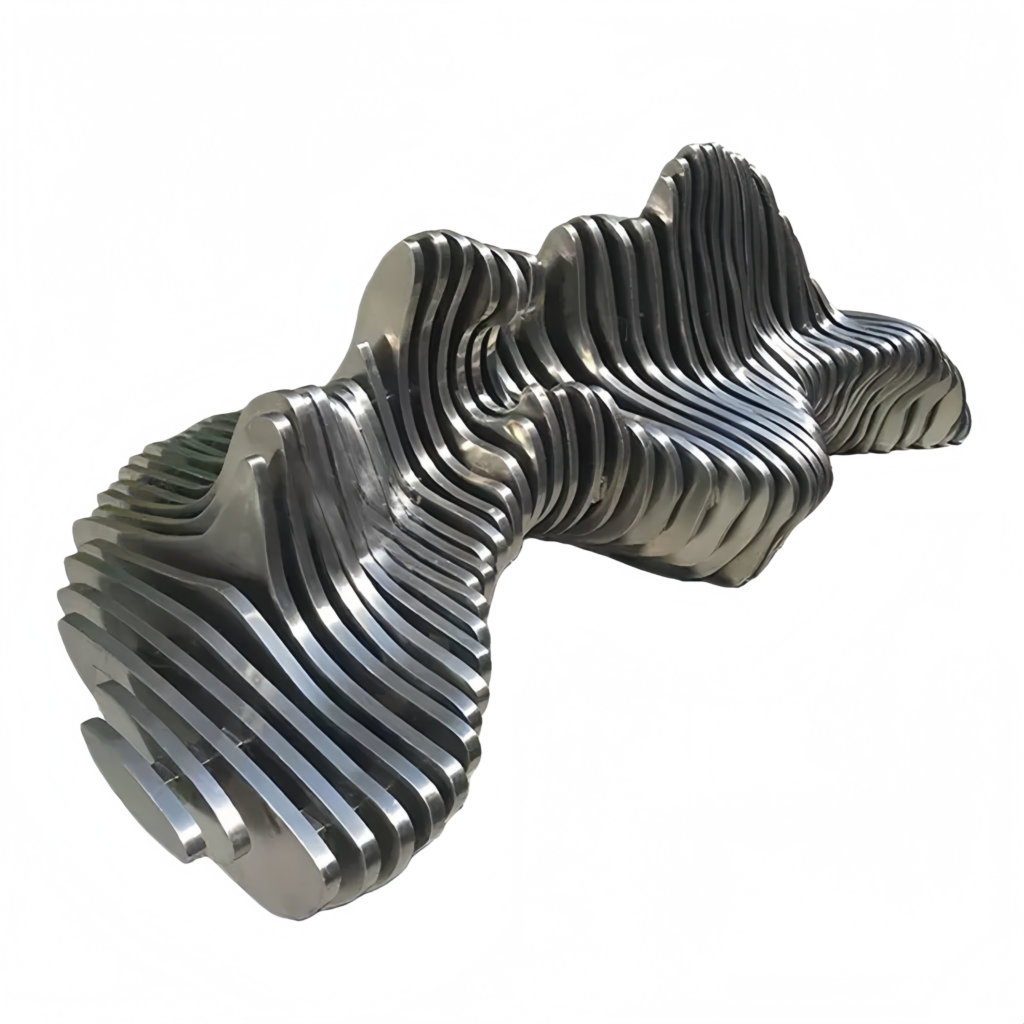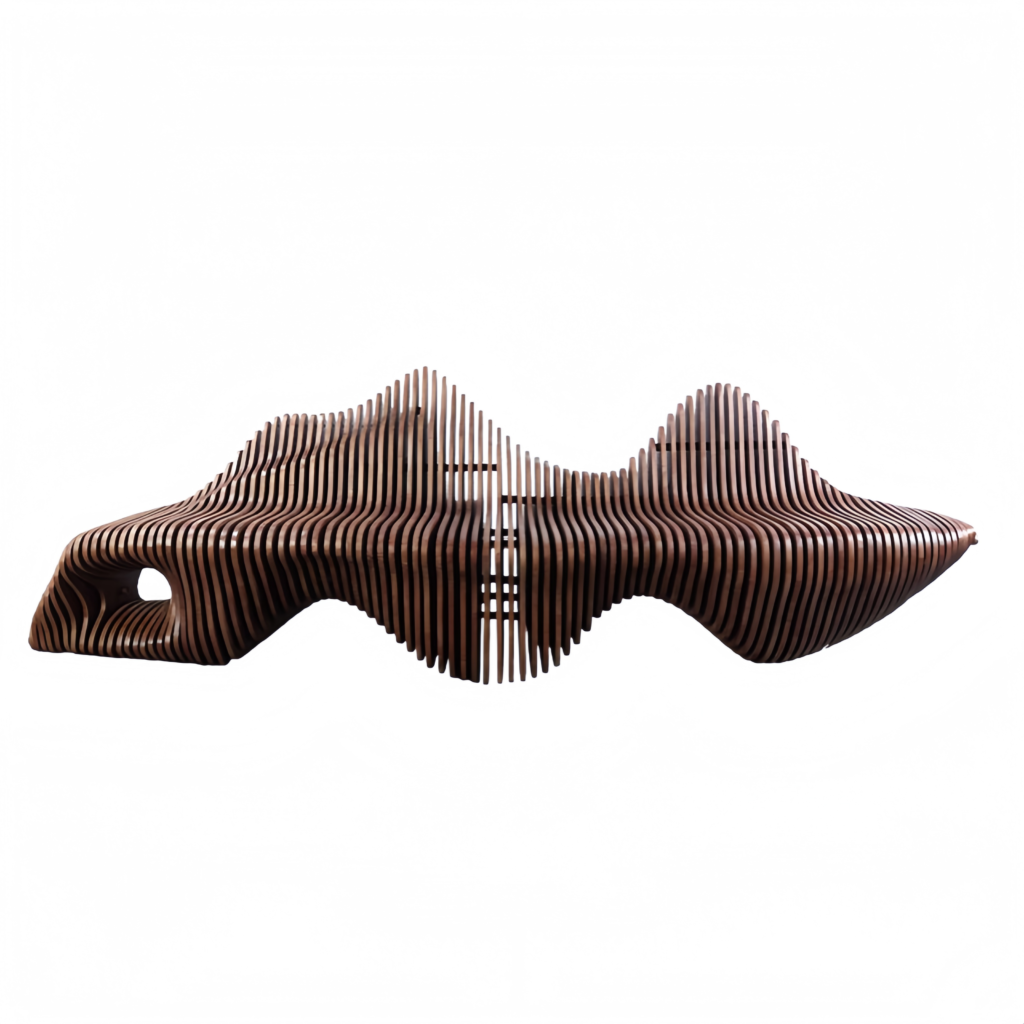Custom Parametric Furniture has transformed the way designers approach architecture, interiors, and public installations. By combining computational modeling with material innovation, parametric furniture enables the creation of sculptural forms that are both functional and expressive. However, the performance and aesthetics of each piece depend greatly on material choice. Among the diverse options available, three materials dominate the field — Fiberglass (FRP), Stainless Steel, and Wood. Each contributes unique properties that define how Custom Parametric Furniture behaves, feels, and endures over time.
1. Fiberglass (FRP): Freedom of Form and Lightweight Durability

Key Characteristics
Fiberglass, or Fiber Reinforced Plastic (FRP), is one of the most versatile materials used in Custom Parametric Furniture. It combines resin and glass fibers to form a lightweight yet incredibly strong composite. The material can be molded into nearly any shape, allowing designers to produce seamless, organic geometries that define futuristic aesthetics.
Advantages
• Outstanding strength-to-weight ratio
• Resistance to corrosion, UV exposure, and temperature changes
• Smooth surface finishes in various colors, gloss levels, or textures
• Cost-effective manufacturing for medium to large-scale projects
Applications
FRP is widely used in outdoor benches, curved seating, and sculptural installations where both resilience and artistic fluidity are required. It performs exceptionally in coastal or humid environments and aligns perfectly with the minimal, aerodynamic language of modern parametric design.
2. Stainless Steel: Precision, Strength, and Architectural Integrity

Key Characteristics
Stainless steel remains a cornerstone in Custom Parametric Furniture manufacturing because of its mechanical precision and longevity. It is often used as the structural backbone for benches, planters, and modular frames that require both load-bearing capacity and visual refinement. The clean metallic sheen also enhances reflections and complements the geometric flow of parametric structures.
Advantages
• Exceptional strength and rigidity
• Long-term corrosion resistance, ideal for outdoor exposure
• Low maintenance and superior dimensional stability
• Enhances a modern, industrial, or architectural aesthetic
Applications
Commonly integrated into public installations, stainless steel adds structural confidence and elegance to Custom Parametric Furniture. It pairs well with fiberglass or wood, creating a balanced dialogue between organic and engineered materials. Its reflective surfaces make it ideal for contemporary spaces emphasizing precision and modern identity.
3. Wood: Organic Warmth and Sustainable Craftsmanship

Key Characteristics
Wood represents the emotional and sustainable dimension of Custom Parametric Furniture. Its natural grain and tactile warmth provide a counterbalance to synthetic materials. By integrating digital fabrication techniques such as CNC milling and layered lamination, designers can translate complex algorithms into organic wooden sculptures.
Advantages
• Renewable and biodegradable material supporting eco-friendly design
• Rich textures and tones add visual depth and warmth
• Compatible with precision cutting and modular assembly
• Provides acoustic comfort and tactile connection to users
Applications
Wood is frequently used for interior furniture, wall claddings, and artistic installations. When properly treated with protective coatings, it can also be applied in semi-outdoor environments. Its presence enhances spaces that value natural aesthetics and emotional resonance, making it an essential material in human-centered parametric design.
4. Material Selection in Custom Parametric Furniture Design
Choosing the right material involves more than just strength or cost; it defines the identity of the furniture. For public or outdoor projects, fiberglass and stainless steel ensure durability, weather resistance, and minimal maintenance. For indoor spaces, wood offers sustainability and aesthetic comfort. Many designers combine materials — for example, an FRP shell supported by a stainless steel frame — to achieve balance between flexibility, durability, and visual contrast. At Ningbo Toprise, material synergy is at the heart of every Custom Parametric Furniture project, ensuring each piece performs perfectly in its intended environment.
Conclusion
Fiberglass, stainless steel, and wood each shape the narrative of Custom Parametric Furniture in distinct yet complementary ways. Fiberglass enables innovation through freeform modeling, stainless steel ensures stability and longevity, and wood reintroduces nature’s authenticity into digital craftsmanship. When used thoughtfully, these materials not only define form and function but also elevate the emotional and spatial quality of modern environments. By mastering material integration, designers can transform Custom Parametric Furniture into enduring expressions of art, technology, and sustainability.


